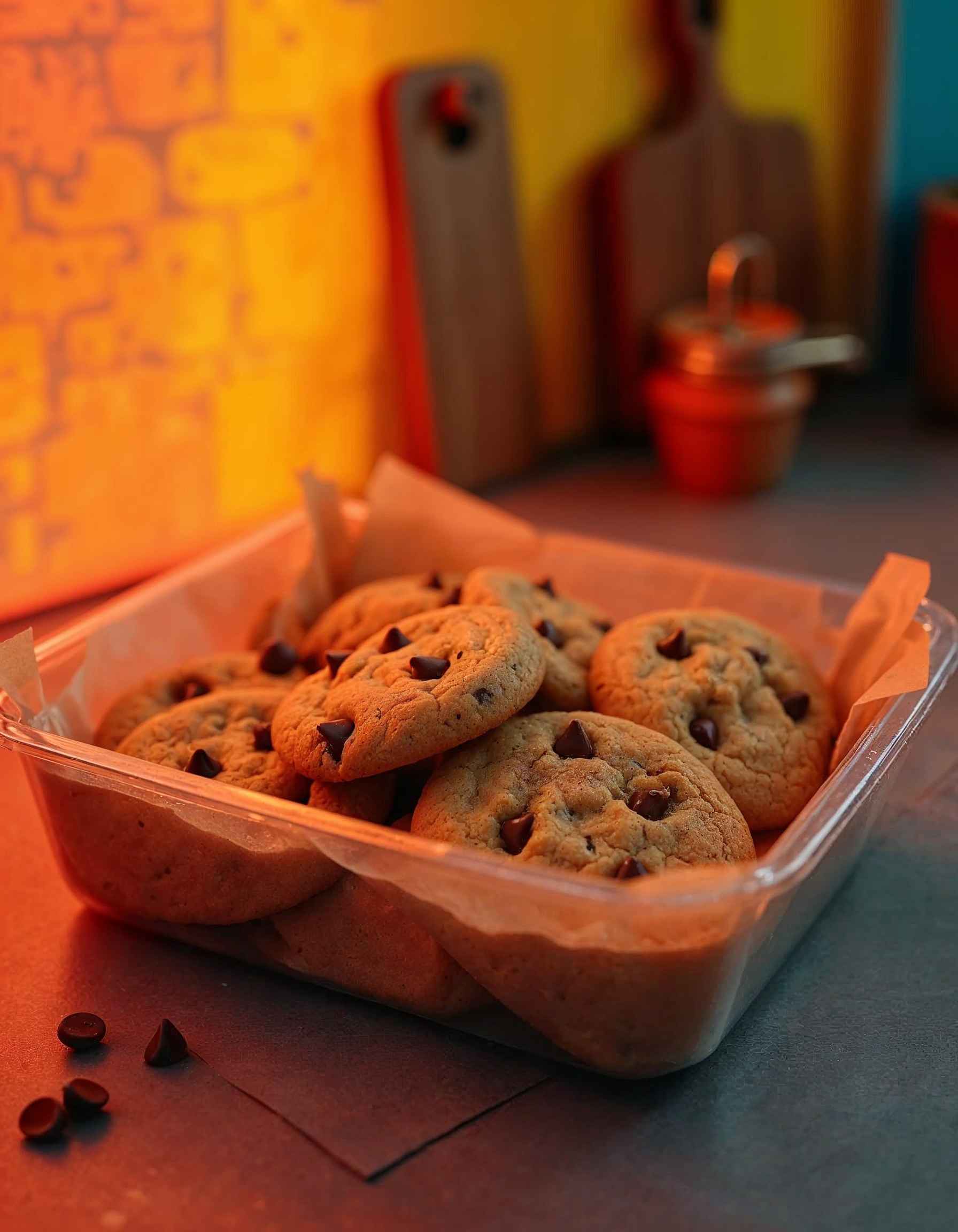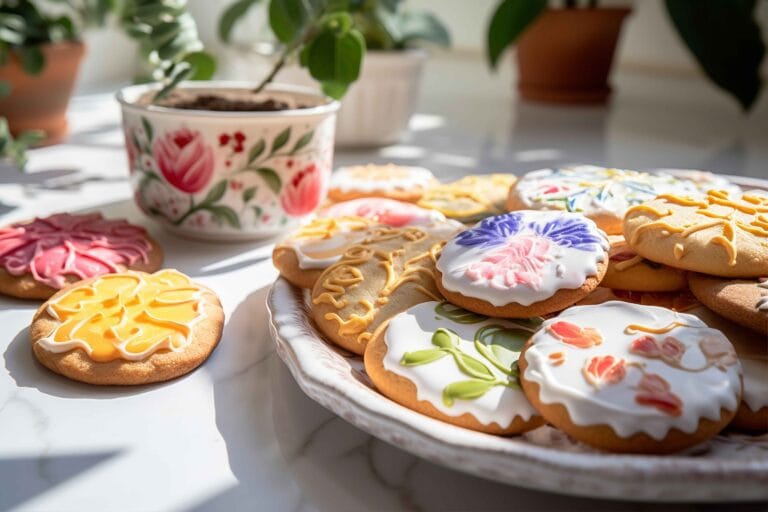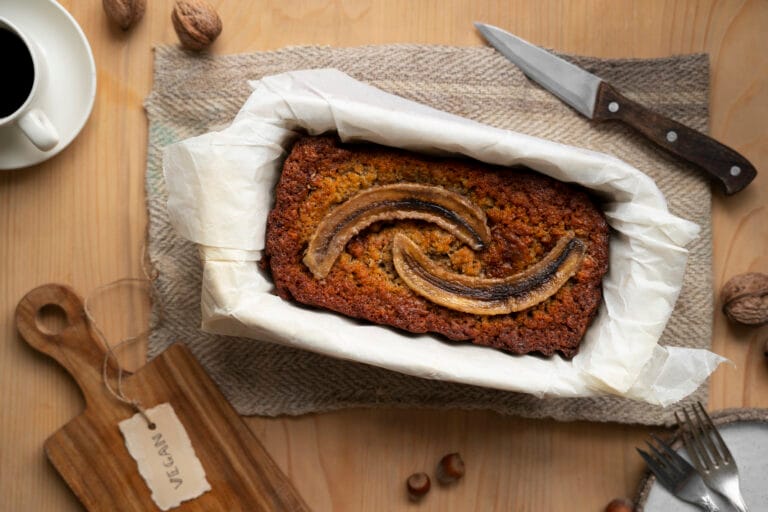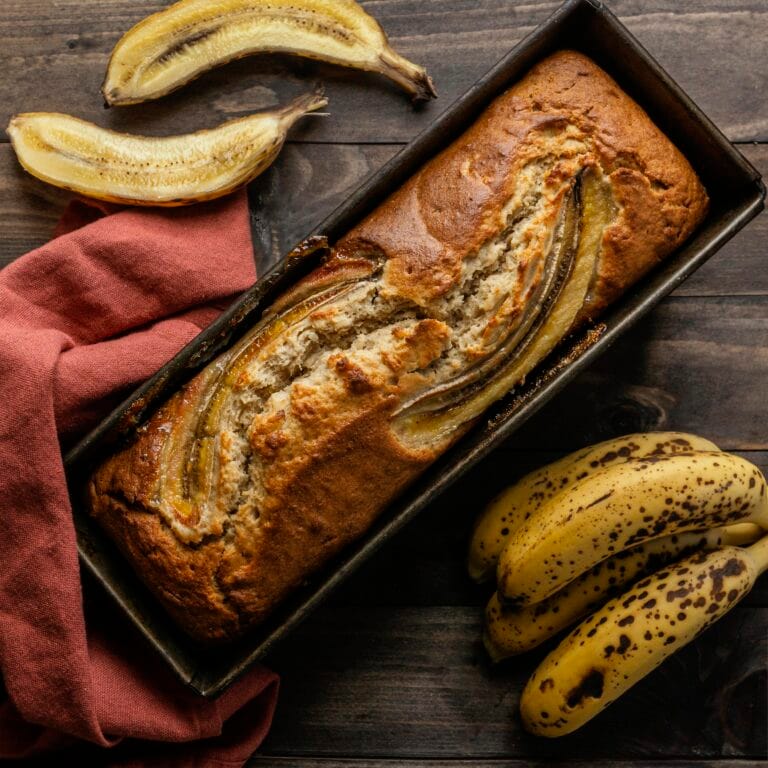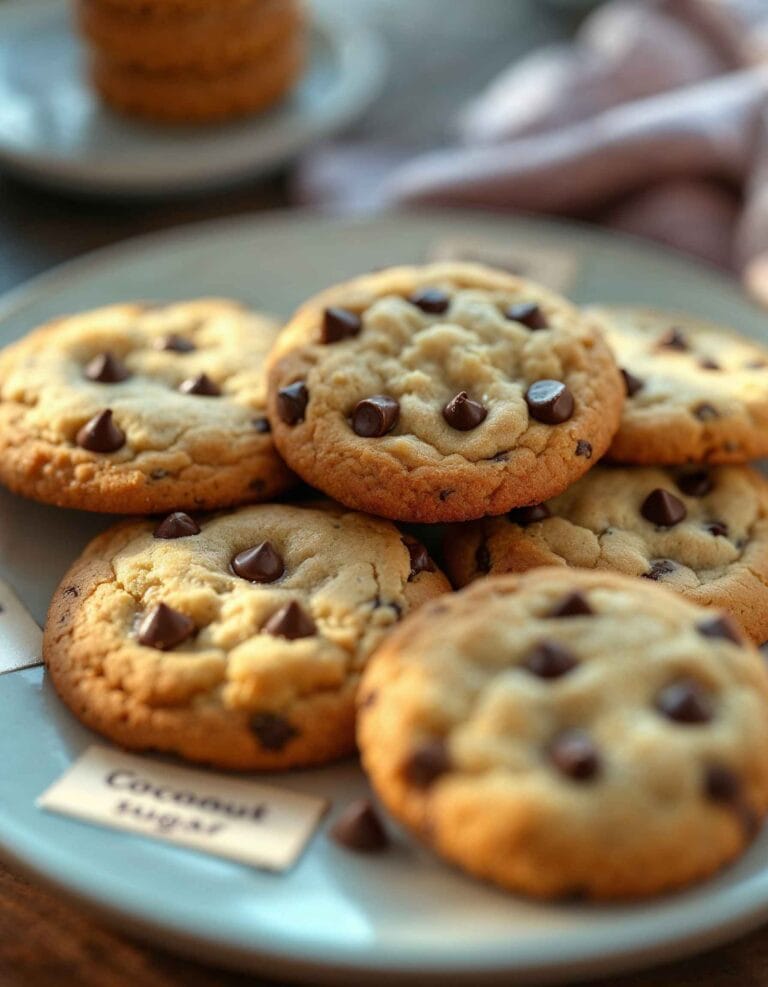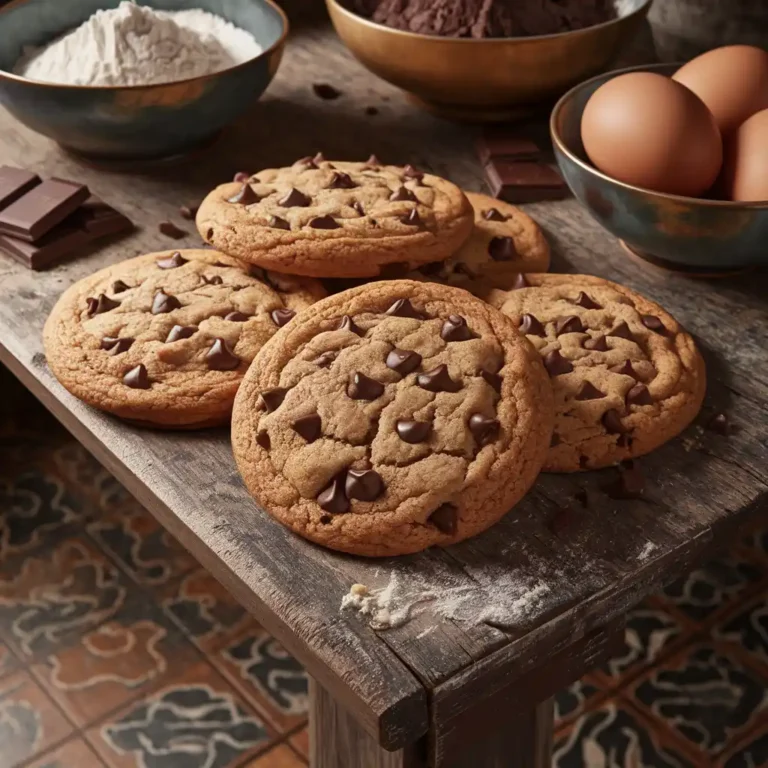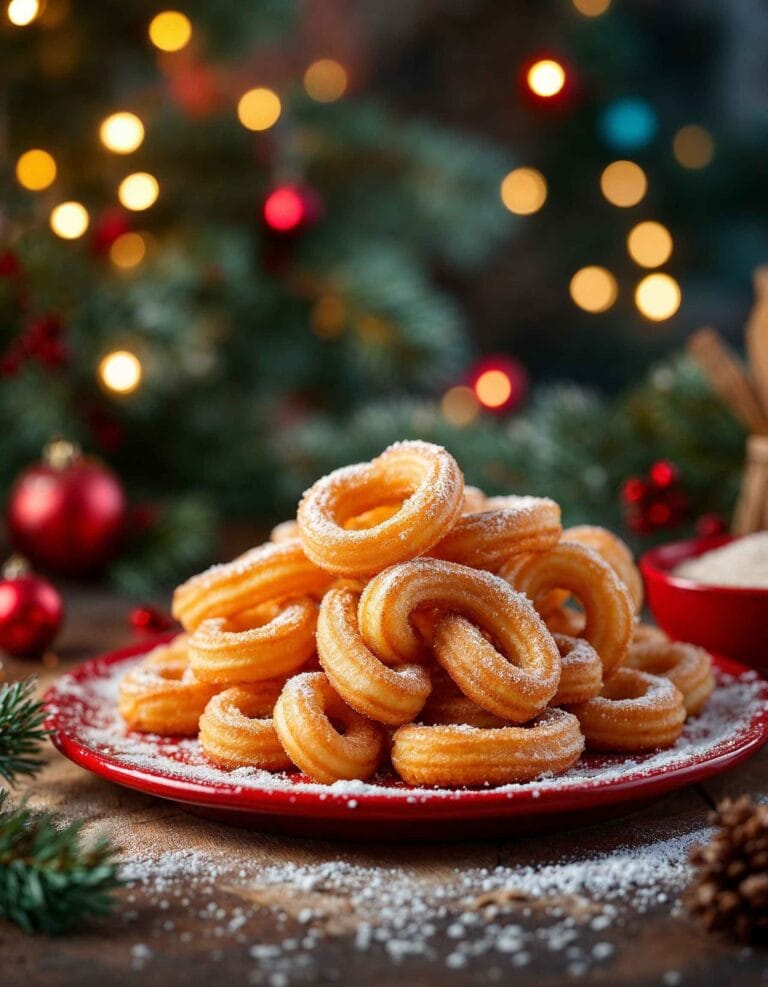What Type of Container Is Best for Storing Cookies?
Storing cookies correctly ensures they stay fresh and delicious, whether soft and chewy or crispy and crunchy. Different cookies have unique storage needs, and using the wrong container can lead to stale textures, flavor loss, or even spoilage. This guide will walk you through the best storage options for cookies, their pros and cons, and the best practices to keep your cookies fresh longer.
Knowing what type of container is best for storing cookies ensures they remain fresh and flavorful.
Best Types of Cookie Containers
What Type of Container is Best for Storing Cookies?
Proper storage begins with selecting the right container. Various options are available, each suited to specific cookie types and storage durations. Below, we delve into the most effective containers for keeping cookies fresh.
When choosing a storage solution, consider the best material for a cookie jar to ensure durability and freshness.
Plastic Containers with Airtight Lids
Plastic containers are one of the most versatile options for storing cookies. Here’s why they stand out:
Pros:
- Lightweight and durable, making them easy to transport.
- Available in various sizes to fit small or large batches.
- Airtight lids keep air and moisture out, ensuring freshness.
- Affordable and widely available.
Cons:
- May retain odors if not cleaned thoroughly.
- Can warp if exposed to high temperatures.
Best For: Soft cookies, such as chocolate chip or peanut butter cookies, which benefit from an airtight environment to maintain moisture.
Tips for Use:
- Line the container with parchment paper to prevent cookies from sticking.
- Separate layers of cookies with wax paper to maintain their shape.
Glass Jars with Sealing Mechanisms
Glass jars are not only practical but also aesthetically pleasing. They are especially popular for displaying cookies on kitchen counters or gifting.
Glass jars are a popular option, but do glass cookie jars keep cookies fresh? This article explores their effectiveness.
Pros:
- Transparent design allows you to see the contents.
- Sealing mechanisms, such as rubber gaskets, provide an airtight seal.
- Resistant to odors and stains.
Cons:
- Heavier than other materials and prone to breakage.
- May not hold as many cookies as larger plastic or metal containers.
Best For: Crispy cookies like biscotti or gingersnaps that need a dry environment to maintain their crunch.
Tips for Use:
- Keep jars in a cool, dry place away from direct sunlight to prevent heat exposure.
Metal Tins
Metal tins have a timeless charm and are often associated with holiday or gift packaging for cookies.
Pros:
- Durable and long-lasting.
- Offers excellent protection from light and physical damage.
- Ideal for gifting due to their festive designs.
Cons:
- Not always airtight unless paired with a sealing mechanism.
- Can impart a metallic taste if the cookies are in direct contact with the tin.
Best For: Cookies with a medium shelf life, like oatmeal raisin or sugar cookies, particularly when used for gifting.
Tips for Use:
- Line the tin with parchment or wax paper to avoid direct contact between the cookies and the metal.
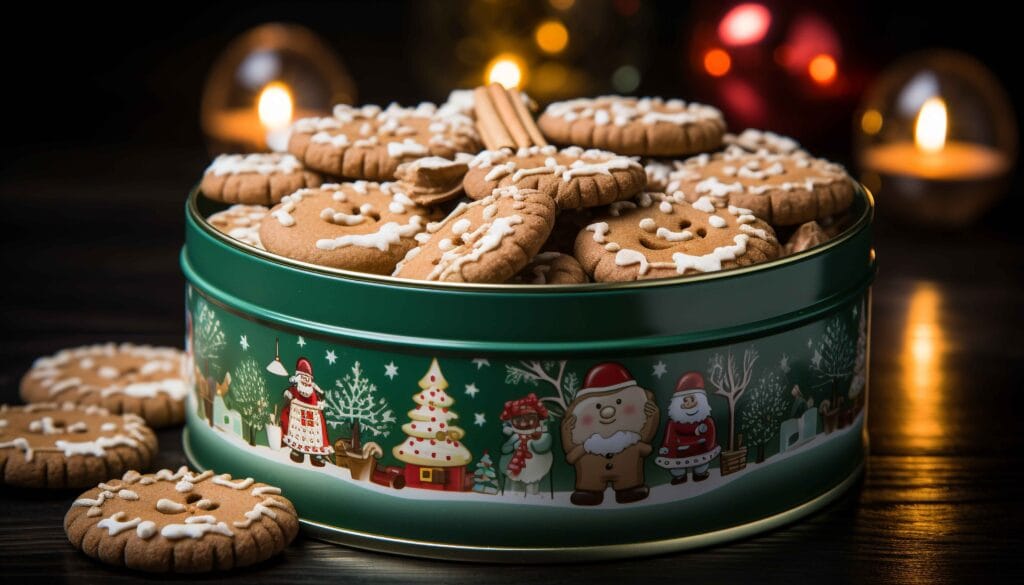
Ceramic Cookie Jars
Ceramic cookie jars are a classic choice, often doubling as a decorative piece in the kitchen.
Pros:
- Visually appealing with various designs and colors.
- Provides a homey, nostalgic storage option.
Cons:
- Rarely airtight, leading to faster staling of cookies.
- Less practical for long-term storage.
Best For: Cookies intended for short-term consumption, such as a batch baked for the family to enjoy within a week.
Tips for Use:
- Place cookies in a resealable plastic bag inside the jar for added freshness.
Vacuum-Sealed Containers
Vacuum-sealed containers are the ultimate solution for long-term storage, whether at room temperature or in the freezer.
Pros:
- Removes air entirely, slowing down the staling process.
- Prevents freezer burn for cookies stored in cold conditions.
- Ideal for preserving large batches.
Cons:
- Requires a vacuum-sealing device, which can be costly.
- Less suitable for frequent access due to resealing requirements.
Best For: Seasonal cookies or large batches that need to be stored for months, such as holiday treats.
Tips for Use:
- Freeze cookies in individual portions before vacuum-sealing for easier access.
Considerations for Each Cookie Type
Different types of cookies have varying storage needs based on their texture, ingredients, and preparation methods. Choosing the right container and storage method ensures cookies retain their intended flavor and texture.
For those who love experimenting, try storing cookies from these unique cookie recipes that will surprise your taste buds to see how different methods affect freshness.
Soft Cookies
Soft cookies, such as chocolate chip, oatmeal, or peanut butter cookies, are prized for their chewy texture. Preserving this quality requires careful storage.
Key Considerations:
- Moisture retention is crucial to prevent them from becoming dry.
- Exposure to air can cause soft cookies to harden quickly.
Best Storage Methods:
- Container: Use an airtight plastic or glass container to lock in moisture.
- Layering: Place a piece of parchment paper between layers to prevent sticking.
- Pro Tip: Add a slice of bread or a few apple slices to the container. The moisture from the bread helps keep cookies soft without altering their taste.
Crispy Cookies
Crispy cookies, like gingersnaps, biscotti, or sugar cookies, need a dry environment to maintain their crunch.
Key Considerations:
- Humidity can soften crispy cookies, ruining their texture.
- Proper separation from other cookie types is essential to avoid moisture transfer.
Best Storage Methods:
- Container: Glass jars or metal tins with airtight lids work best.
- Environment: Store in a cool, dry place away from heat or humidity.
- Pro Tip: If cookies lose their crispiness, pop them in a 300°F (150°C) oven for 5–10 minutes to restore their crunch.
Frosted and Decorated Cookies
Frosted or intricately decorated cookies, such as those made for special occasions, require special care to preserve their appearance and taste.
Key Considerations:
- Frosting or icing can stick to the container if not stored correctly.
- Decorations, like sprinkles or edible embellishments, can be easily damaged.
Best Storage Methods:
- Container: Use a shallow plastic or glass container with plenty of space between layers.
- Layering: Separate cookies with wax paper to protect frosting and decorations.
- Pro Tip: Allow frosting or icing to set completely before storage to prevent smudging.
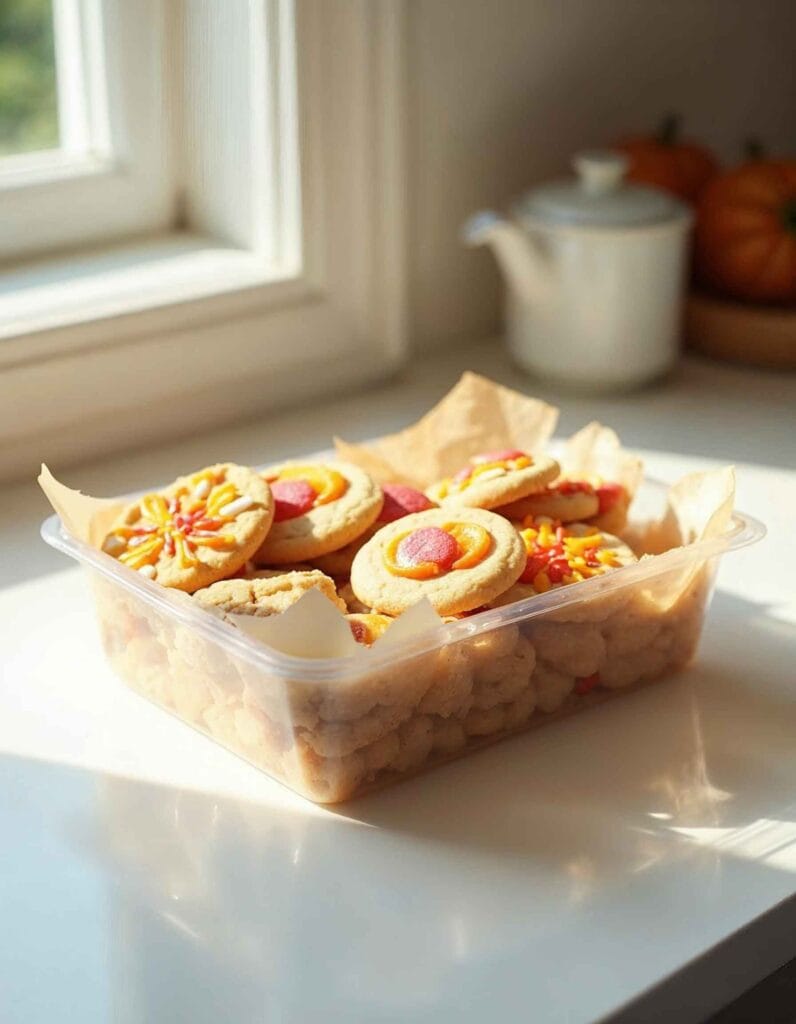
Specialty Cookies (Macarons, Sandwich Cookies, Etc.)
Specialty cookies like macarons, sandwich cookies, or thumbprint cookies require attention due to their delicate structure and fillings.
Key Considerations:
- Many specialty cookies contain perishable fillings like jam, cream, or ganache.
- Crumbling or breaking is a risk if they’re not handled with care.
Best Storage Methods:
- Container: Airtight plastic or glass containers with shallow compartments.
- Refrigeration: If the filling is perishable, store the cookies in the refrigerator.
- Pro Tip: Bring refrigerated cookies to room temperature before serving for the best flavor and texture.
Freezer-Friendly Cookies
Some cookies are ideal candidates for freezing, allowing you to prepare them in advance or preserve leftovers.
Key Considerations:
- Not all cookies freeze well; avoid freezing frosted or delicate cookies.
- Proper packaging is essential to prevent freezer burn.
Best Storage Methods:
- Container: Use freezer-safe plastic containers or resealable freezer bags.
- Preparation: Arrange cookies in a single layer, separated by parchment paper.
- Pro Tip: Label containers with the date and cookie type for easy identification.
Frequently Asked Questions (FAQs)
What is the best container to store homemade cookies in?
The best container for homemade cookies depends on their type:
- Soft cookies: Use an airtight plastic or glass container to retain moisture. Adding a slice of bread can help maintain softness.
- Crispy cookies: Opt for a glass jar or metal tin with a tight seal to keep out moisture.
For mixed cookie types, store them separately to preserve their individual textures and flavors.
Is it better to store cookies in glass or plastic?
Both glass and plastic have advantages, and the choice depends on your priorities:
- Glass containers:
- Provide a more airtight seal when paired with rubber gaskets.
- Are non-porous, meaning they won’t absorb odors or stains.
- Ideal for crispy cookies.
- Plastic containers:
- Lightweight and easy to handle.
- Often more affordable and come in various sizes.
- Better for soft cookies, as they allow for better layering and portability.
For long-term storage, glass is preferred for its durability and sealing efficiency, while plastic is better for short-term convenience.
What type of container keeps cookies crisp?
Crisp cookies stay crunchy when stored in a dry environment. The best containers for keeping cookies crisp include:
- Glass jars with sealing mechanisms: Prevent moisture from entering while allowing the cookies to breathe.
- Metal tins: Offer a light-proof and low-humidity storage solution, especially for holiday or decorative cookies.
Ensure cookies are completely cool before storage, as residual heat can create condensation and soften their texture.
How long do baked cookies last in Tupperware?
Baked cookies can last in Tupperware containers for:
- Soft cookies: 5–7 days when stored in an airtight Tupperware container at room temperature.
- Crispy cookies: Up to 2 weeks if kept in a cool, dry environment.
For longer storage, consider freezing cookies in freezer-safe Tupperware, where they can last up to 3 months. Always allow cookies to cool before sealing them in Tupperware to prevent sogginess caused by trapped steam.
If you’re storing frosted cookies, ensure decorations are completely set. Learn what is the easiest way to decorate cookies for stunning results.
Conclusion
Storing cookies properly ensures they maintain their freshness, texture, and flavor for as long as possible. The choice of container plays a critical role, with options such as airtight plastic containers for soft cookies, glass jars for crispy ones, and metal tins for decorative or gifting purposes. Understanding the unique needs of different cookie types allows you to select the best storage method, preserving their quality and extending their shelf life.
For the ultimate cookie experience:
- Use airtight containers to prevent moisture or air from affecting texture.
- Store cookies separately based on type to avoid cross-contamination of flavors and textures.
- Consider freezing cookies for long-term storage using vacuum-sealed or freezer-safe containers.
With these tips and the right storage solutions, your cookies will remain a delightful treat for days, weeks, or even months.
By choosing wisely, you’ll always know what type of container is best for storing cookies to enjoy them at their freshest

